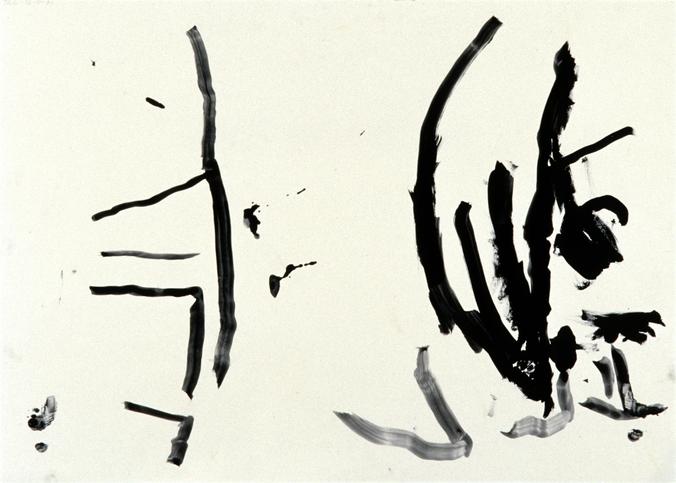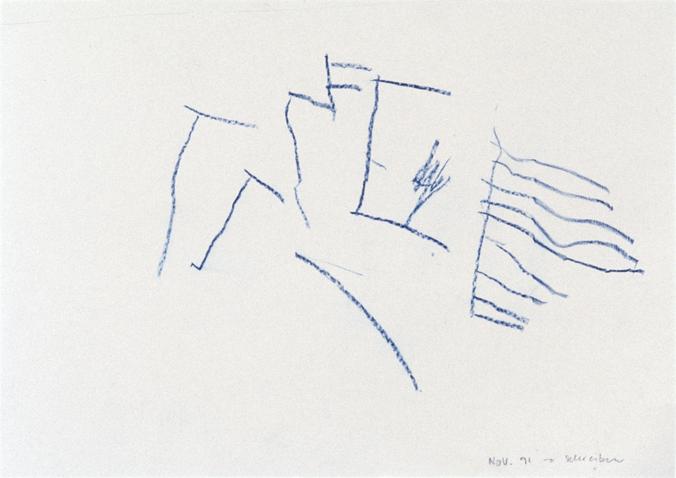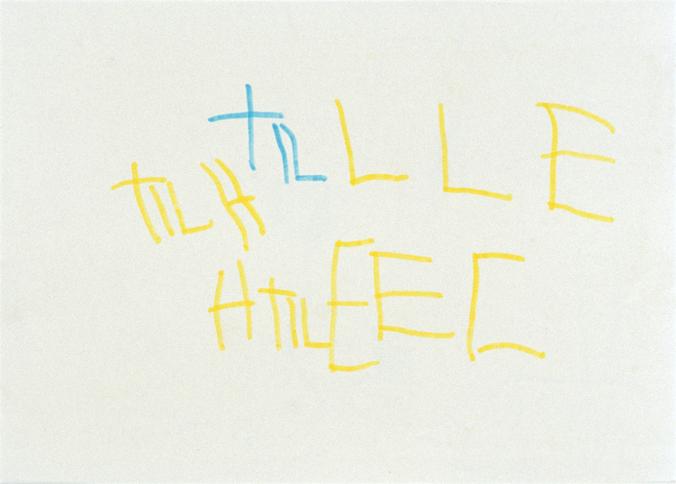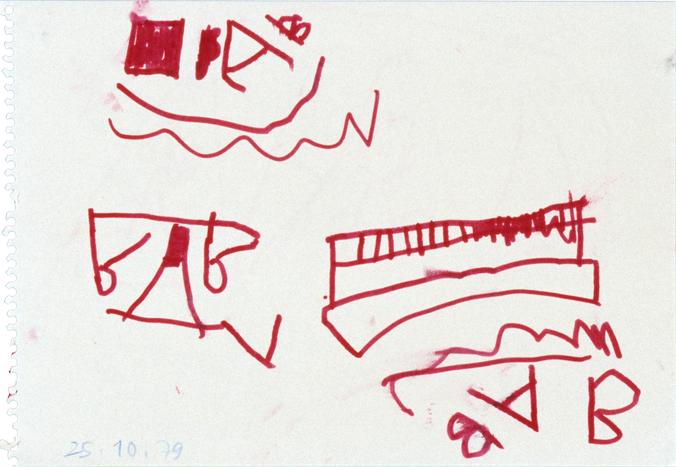EXPRESSION
Vol. 13, 2016
In picture genesis, the "abstract" precedes and enables depiction and coding
Some arguments and speculations based on the investigation of
early pictures in ontogeny
Dieter Maurer
Institute for Contemporary Art Research
Zurich University of the Arts, Switzerland
Figure 5
>> Back
Text
In parallel, in the third and fourth year of life, children sometimes make verbal statements about their drawings and paintings with regard to either the graphic itself (as the intention or appearance of a form or a form configuration), or a depiction or another type of reference. However, verbal expressions of this kind are very complex: some may be acoustically or verbally incomprehensible, or only partly intelligible, others are clearly understandable; some statements are inconsistent (changes of opinions during or after the drawing), others are consistent; some refer to representations that are not recognisable (adults cannot recognise the denoted), some are intelligible only by having attended the drawing process or through closer acquaintance with the child, others are intelligible at once; some are lengthy and complex, others are short and simple; and so on.
In this course of development, part of the described graphic forms, compositions, arrangements, and also part of the colouring are brought into service of an analogy formation (Figure 5) in terms of a depiction attempt of figures, objects, scenes and events, or of an analogy to actions. However, in their turn, these analogy formations are again of a complex kind: Some only concern an analogy of single graphic attributes with single attributes of the denoted, others concern different forms and multiple types of arrangements; some are only intelligible by into account the child’s comments, some need the knowledge of the context of picture production, others are clearly recognisable visually; and so on. Further, first attempts at drawing characters emerge.
Figure 5
Pictures of children (age range = third and fourth year; excerpts of drawings or paintings, or entire pictures), illustrating:
(a) Verbal statements of the children referring to the graphic itself, as the intention or appearance of a form or a form configuration
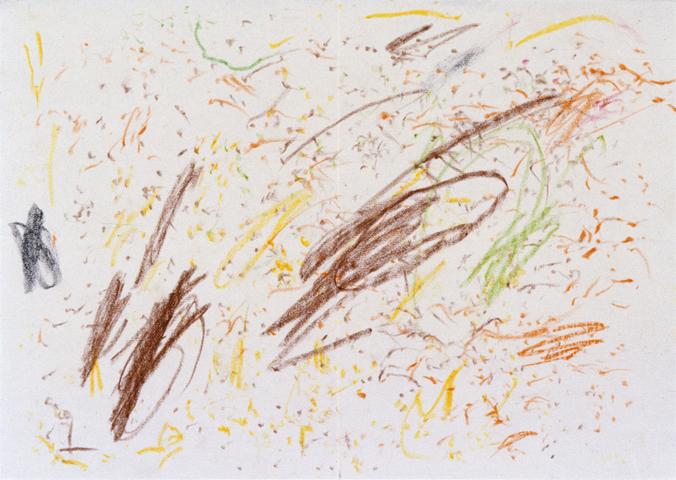
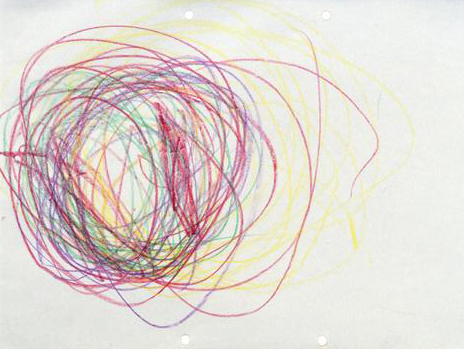
"Points" "Something round"
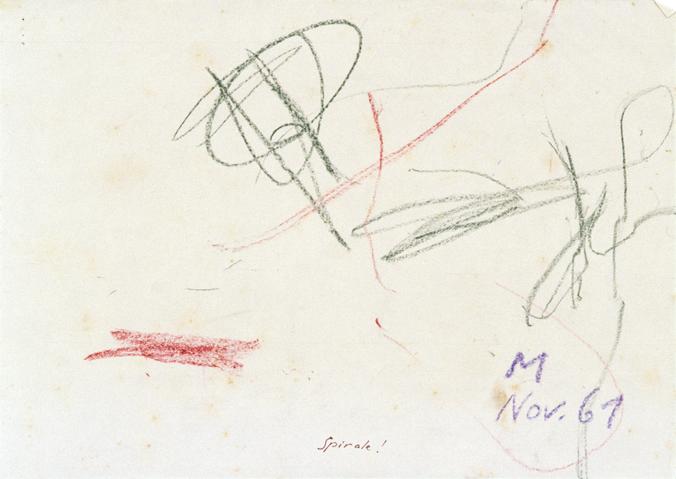
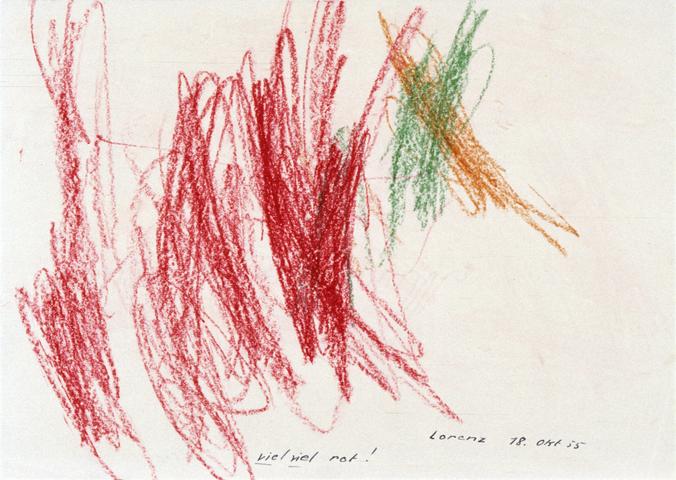
"Spiral" "A lot of red"
(b) Verbal statements of the children referring to supposed figurative representations
that are visually not recognisable
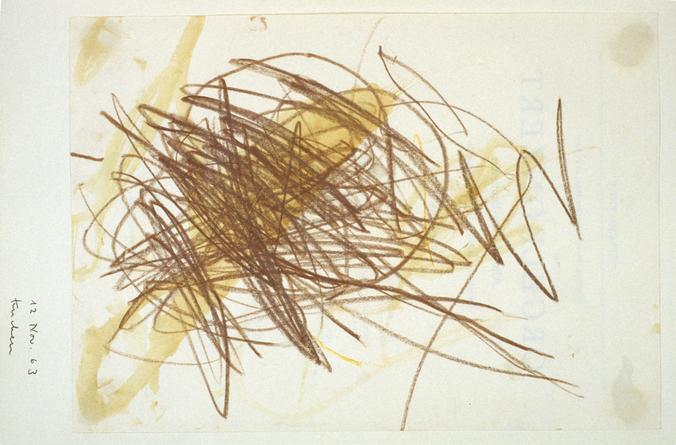
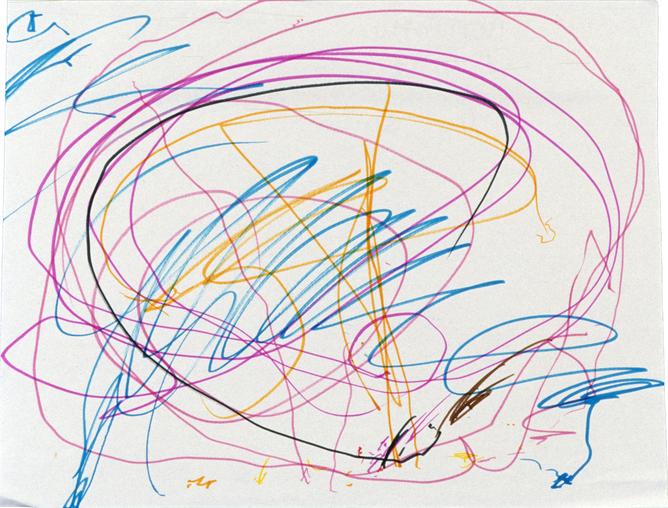
"Cake" "Clock – tree"
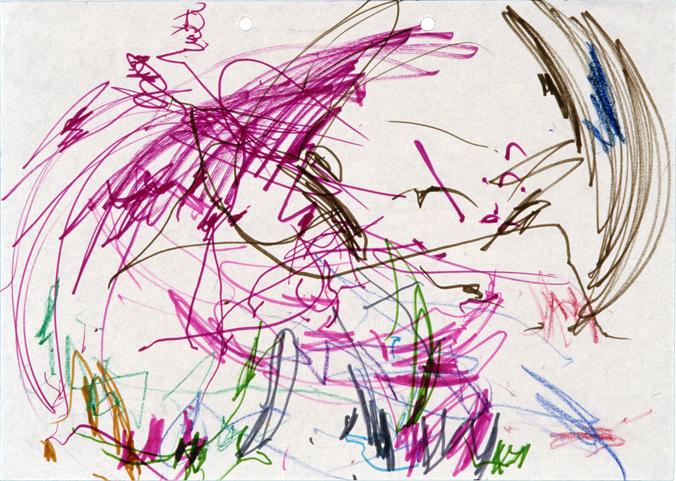
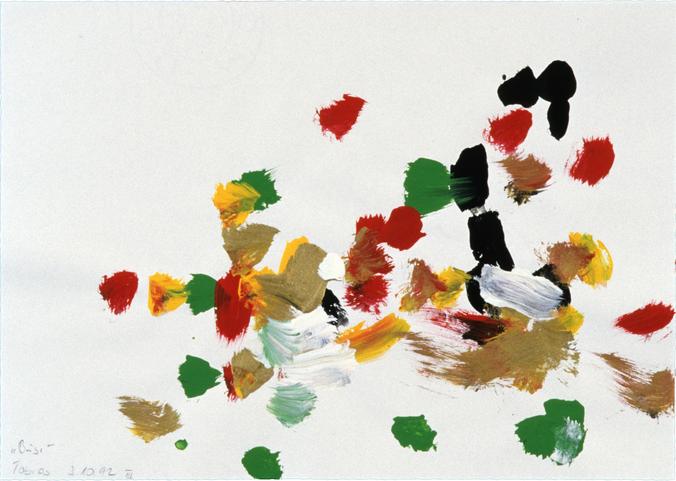
"Rigi" (Mountain in Switzerland) "Cat"
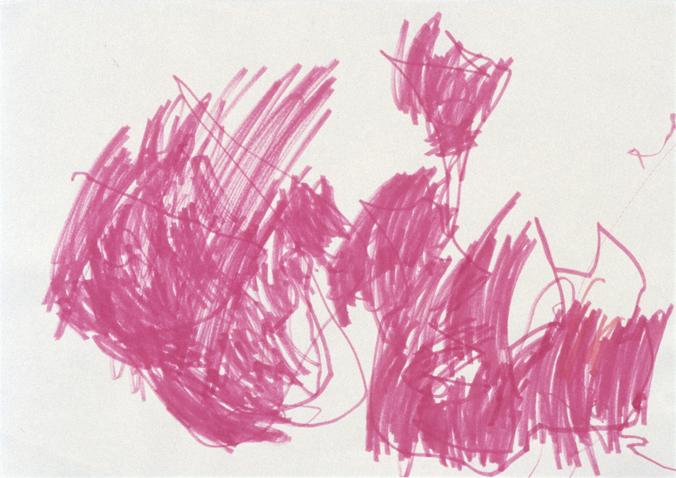
"Pear tree"
(c) Early analogy formations relating to single attributes, which are often intelligible but taking into account the child’s comment
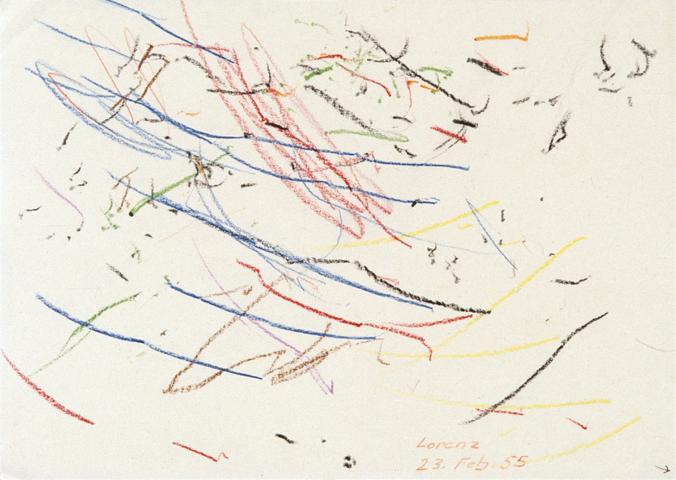
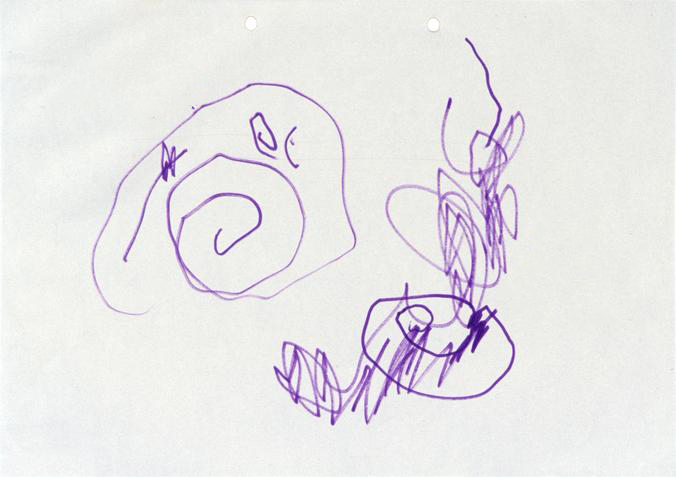
"Lots of hair of a cat" "Snail"
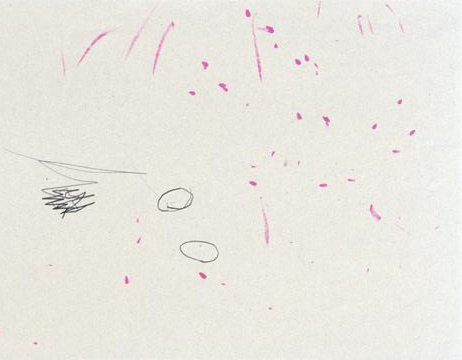
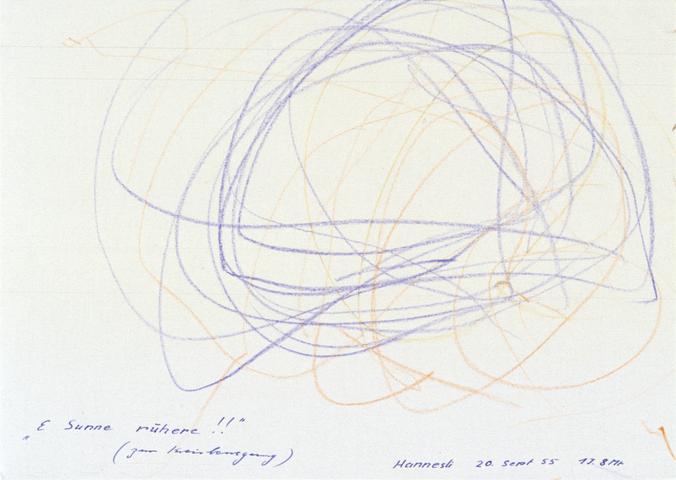
"It snows" "Stirring a sun"
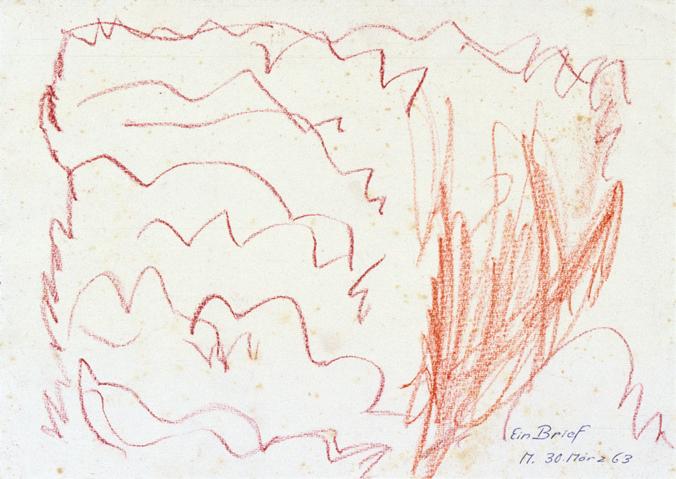
"A letter"
(d) Early analogy formations relating to form complexes and form arrangements, only intelligible by taking into account the child’s comment
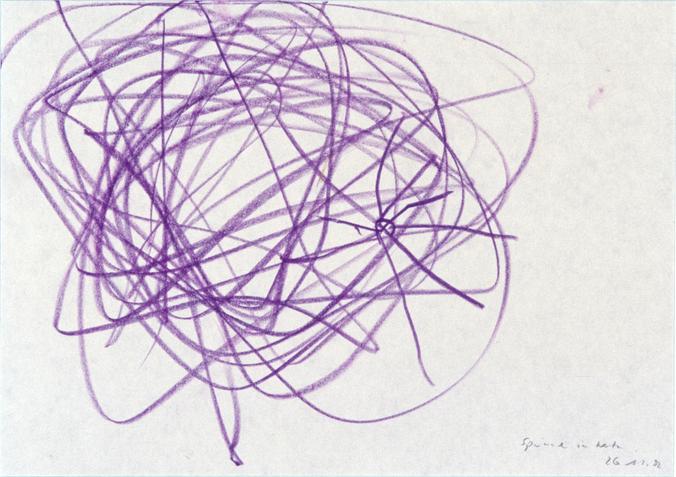
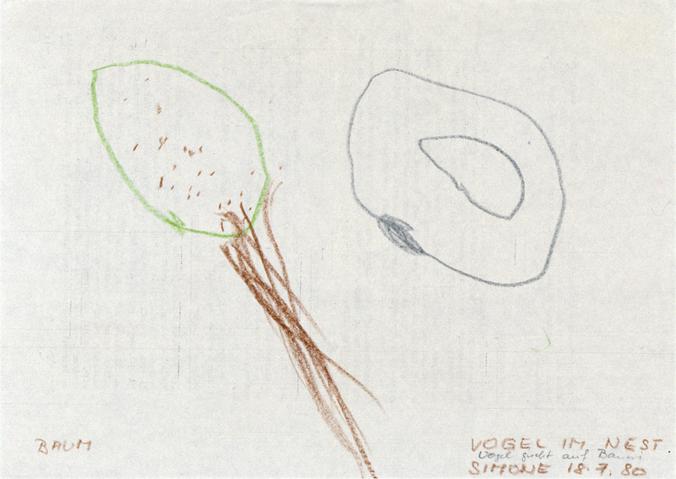
"A spider in the web" "Tree, a bird in the nest"
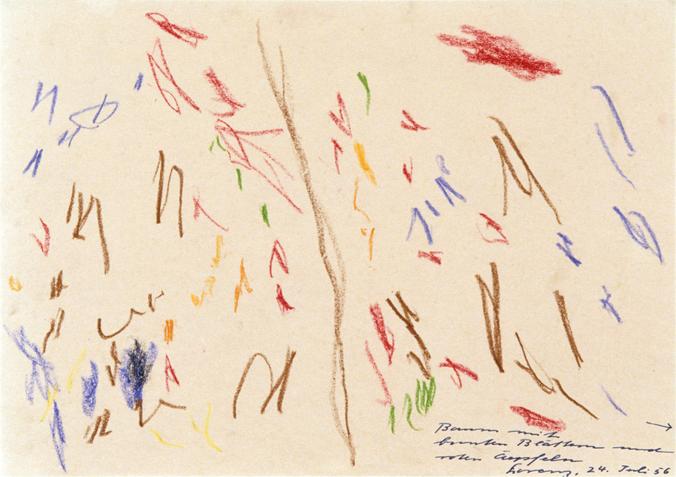
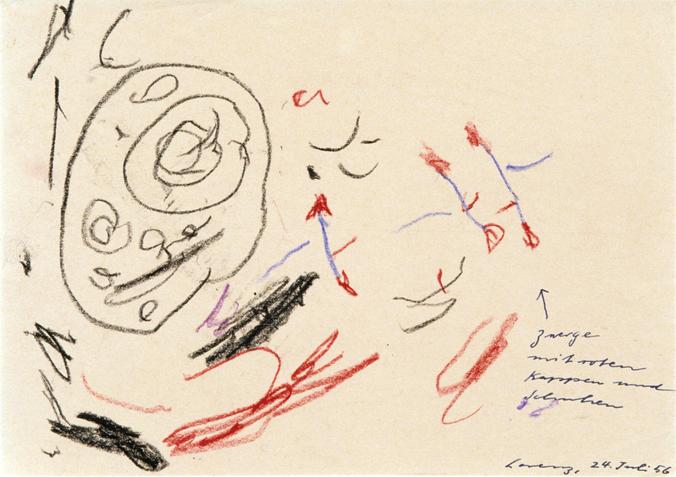
"Tree with colorful leaves and red appels" "Dwarfs with red caps and shoes"
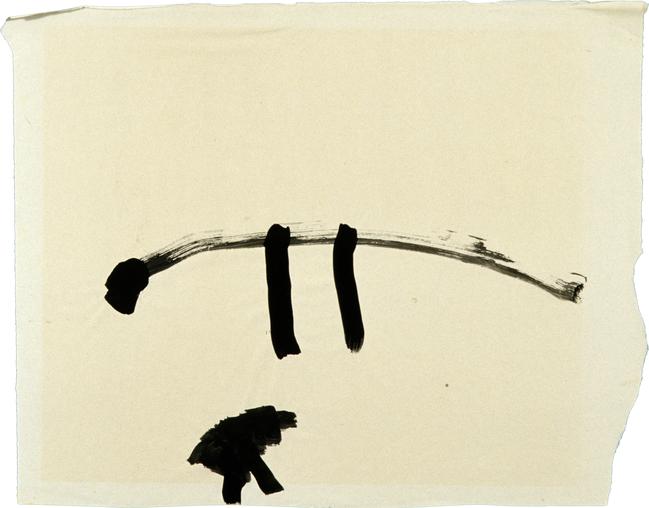
"Dog"
(e) Early analogy formations relating to form complexes and form arrangements which are visually intelligible without a comment
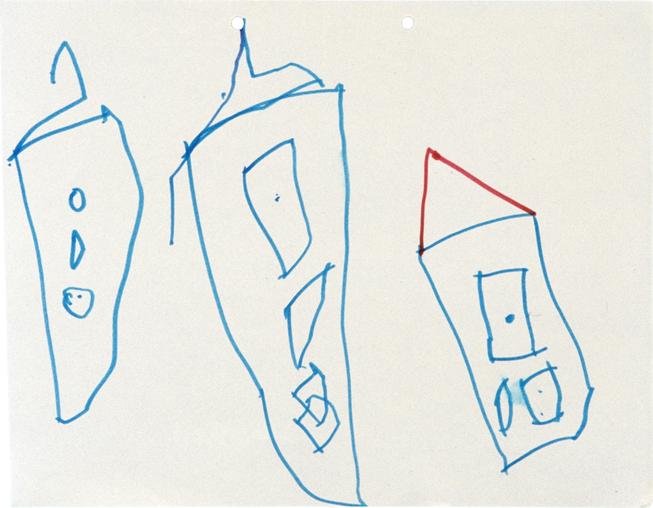
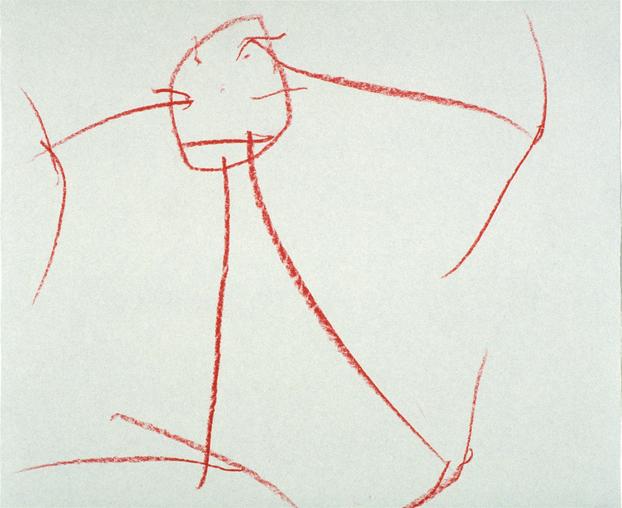
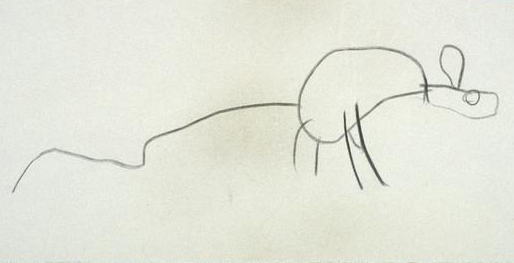
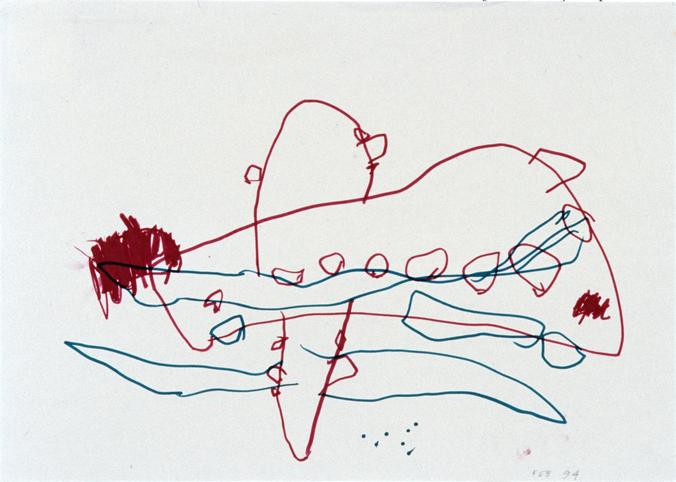
(e) Early drawing of characters
